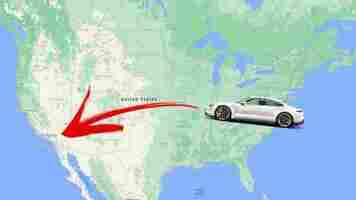A closer look at Boston’s free public transport trial
This article was originally published by Christopher Carey on Cities Today , the leading news platform on urban mobility and innovation, reaching an international audience of city leaders. For the latest updates follow Cities Today on Twitter , Facebook , LinkedIn , Instagram , and YouTube , or sign up for Cities Today News.

The City of Boston is piloting a new scheme that will offer free public transport and shared-bike passes as part of an experiment into how financial incentives can impact commuting behavior.
Workers in five Main Street Districts can apply for the pilot, which gives credits of up to US$60 for Massachusetts Bay Transportation Authority (MBTA) services and a two-month pass for the city’s bike-share scheme, Bluebike.
Applicants will be selected on a first come, first served basis, and while the program is currently only open to workers whose employers are located in the five targeted neighborhoods, officials are working to expand the pilot to other Main Street districts.
“Since the beginning of the COVID-19 pandemic, many essential workers have continued to utilize public transportation because they have been unable to work from home,” said Boston’s Acting Mayor Kim Janey, who was sworn in last week after Marty Walsh departed to become the US Labor Secretary.
“I’m proud to launch this pilot program with the MBTA and Bluebikes to learn more about the impacts on commuter patterns when the cost of public transit is covered. And as more workers begin to return to workplaces, making transit more accessible is critical to our equitable recovery from the pandemic.”
Incentives
The program, which will be managed by the City of Boston Transportation Department in partnership with the MBTA, Boston Main Street organizations , and the American Cities Climate Challenge, is structured to measure how financial incentives for public transit impact commuting behavior, and will be phased in over the next two months.
Results will be used to inform the city’s long-term transportation demand management strategy.
Of the 1,000 qualified workers, some individuals will be randomly selected to get an MBTA pass with the full US$60 credit loaded, and the remainder will receive smaller stipends over time, which will end up totaling US$60.
Bluebike pass-holders will be able to take unlimited trips during the two-month period, but trips must be completed within 45 minutes to avoid usage charges.
Last summer , Boston introduced free 90-day Bluebike passes for employees working in retail and grocery stores, pharmacies, and restaurants.
With an expected increase in post-COVID-19 traffic, the city wants to help alleviate small business districts of congestion and free up curb space for local neighborhood customers. It also seeks to reduce vehicular traffic and environmental impact.
Eligible employees can sign up through the city’s website or by text.
Do EVs excite your electrons? Do ebikes get your wheels spinning? Do self-driving cars get you all charged up?
Then you need the weekly SHIFT newsletter in your life. Click here to sign up .
Porsche Taycan dethrones Tesla Model 3 as the fastest EV to cross the USA
On December 31, 2020, a bunch of EV aficionados set a new EV record for a Cannonball Run in a Porsche Taycan 4S. The group beat the previous record, held by a Tesla Model 3 Long Range, by 51 minutes.

The Cannonball Run is a fabled and illegitimate cross-country road trip-race combo that sees drivers attempt to get from New York to Los Angeles as quickly as possible.
It was first developed to protest the growing number of speed limits being applied to US roads. With road safety being more important than ever, the concept is outdated and not something anyone should condone anymore.
Though the format isn’t entirely dead. Modern drivers are now using the concept to test electric vehicle (EV) range, and set specific battery-powered records for the transcontinental crossing.
It might not sound like a massive achievement; the combustion record is well under 30 hours and the Porsche is a fast car after all. But the Tesla has the advantage of a robust and plentiful Supercharger network, and a longer range between charges.
To dethrone the Tesla, drivers of the Taycan took advantage of Electrify America’s charging network. When working at its best, the network’s chargers can deliver up to 350 kW to the Porsche making it the fastest charging EV on the planet.
In optimal conditions, Porsche says this is enough to add 100 km (62 miles) of range in just five minutes.
Tesla’s V2 Superchargers top out at 150 kW, and its V3 Superchargers deliver peak power of 250 kW — a 350 kW V4 unit is in the works .
Check out the time-lapse video below from Out of Spec Motoring to see how it went. A full road trip report is on the way, so keep your eyes peeled for a more detailed look at what it takes to get across the US in two days in an EV.
It goes without saying, we don’t condone the lawbreaking components of this record-breaking attempt. However, it should give plenty of food for thought to those that say it’s impossible because infrastructure isn’t good enough.
HT – The Drive
SHIFT is brought to you by Polestar. It’s time to accelerate the shift to sustainable mobility. That is why Polestar combines electric driving with cutting-edge design and thrilling performance. Find out how .
Despite EV growth, gas mileage of US vehicle fleets has tanked
Even though it was a bumper year for electric vehicle (EV) sales in 2020, sadly, the average gas mileage of manufacturer’s vehicle fleet got worse.

According to figures from the Environmental Protection Agency (EPA), shared by Carscoops , the average fleet fuel efficiency for 2019 model year vehicles is 24.9 mpg – just 5.6 mpg higher than it was 15 years ago.
This is a drop of 0.2 mpg over the previous period. Fleet averages consider the fuel efficiency of individual cars and how many of them were made.
It’s thought the US’ love of large inefficient sports utility vehicles and trucks are responsible for this decline in average miles per gallon. Some 50% of all US vehicles produced fall into this category.
Whereas EVs make up less than 2% of the US market .
Even though new electrified vehicles have come to market, carmakers are still using emissions credits — a sort of fine that carmakers have to pay if they don’t meet emissions regulations — to meet environmental compliance requirements, Reuters reports .
General Motors and Fiat Chrysler both saw their fleet efficiencies fall, which is not surprising considering they aren’t quite yet on the electric bandwagon. General Motors purchased 10.7 million credits to offset its fleet efficiencies .
The likes of Ford, with its new all-electric Mustang Mach-E saw its fleet average rise by 0.1 mpg.
It’s not all doom and gloom, though. The EPA does point out that in 12 of the last 15 years, the average vehicle efficiency has increased. Although, not by much. In 2004, fleet vehicle efficiency sat at 19.3 mpg.
The EPA expects fleet fuel economy to rise to a record-breaking 25.7 mpg for the 2020 model year as more efficient vehicles reach the market.
SHIFT is brought to you by Polestar. It’s time to accelerate the shift to sustainable mobility. That is why Polestar combines electric driving with cutting-edge design and thrilling performance. Find out how .